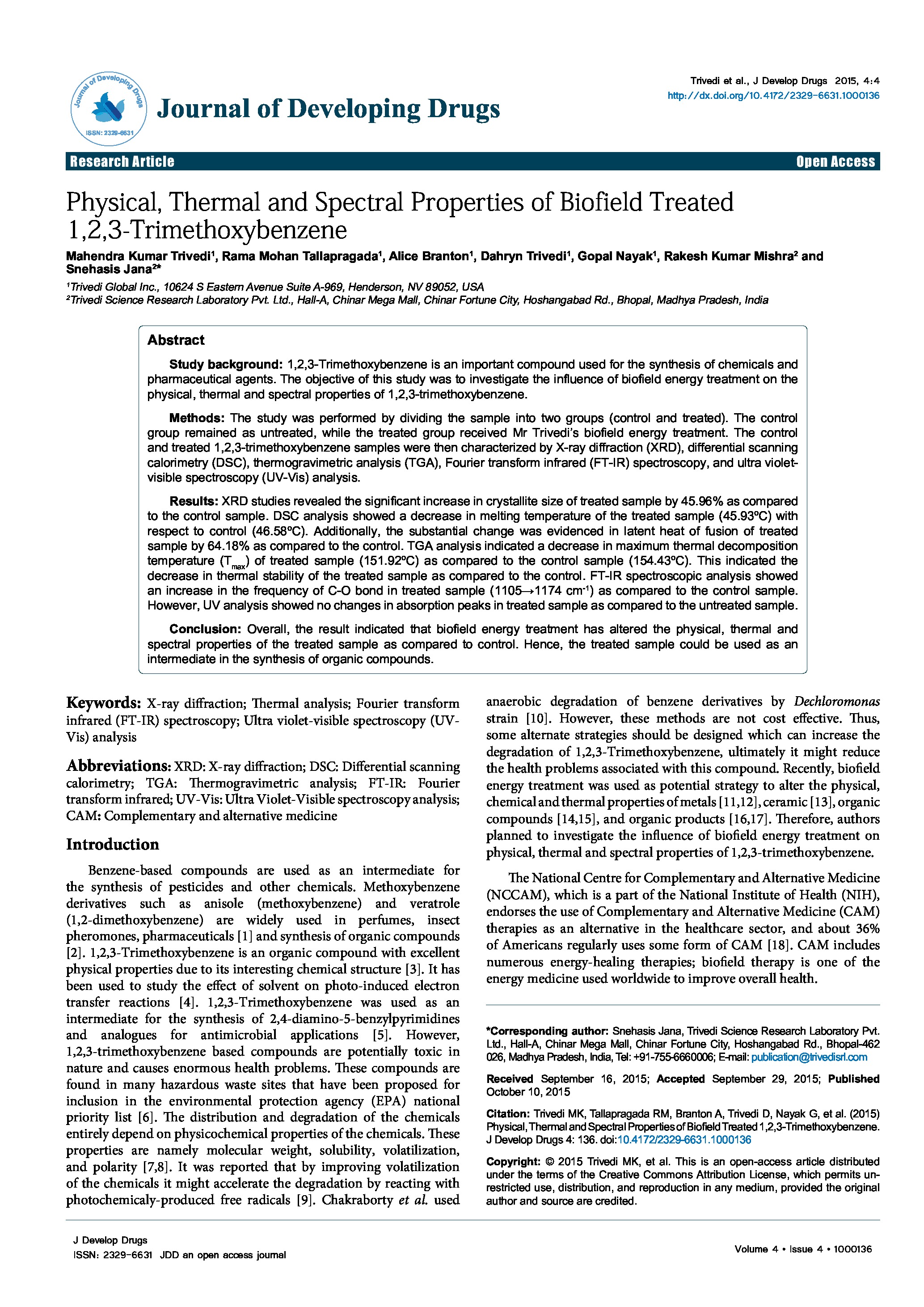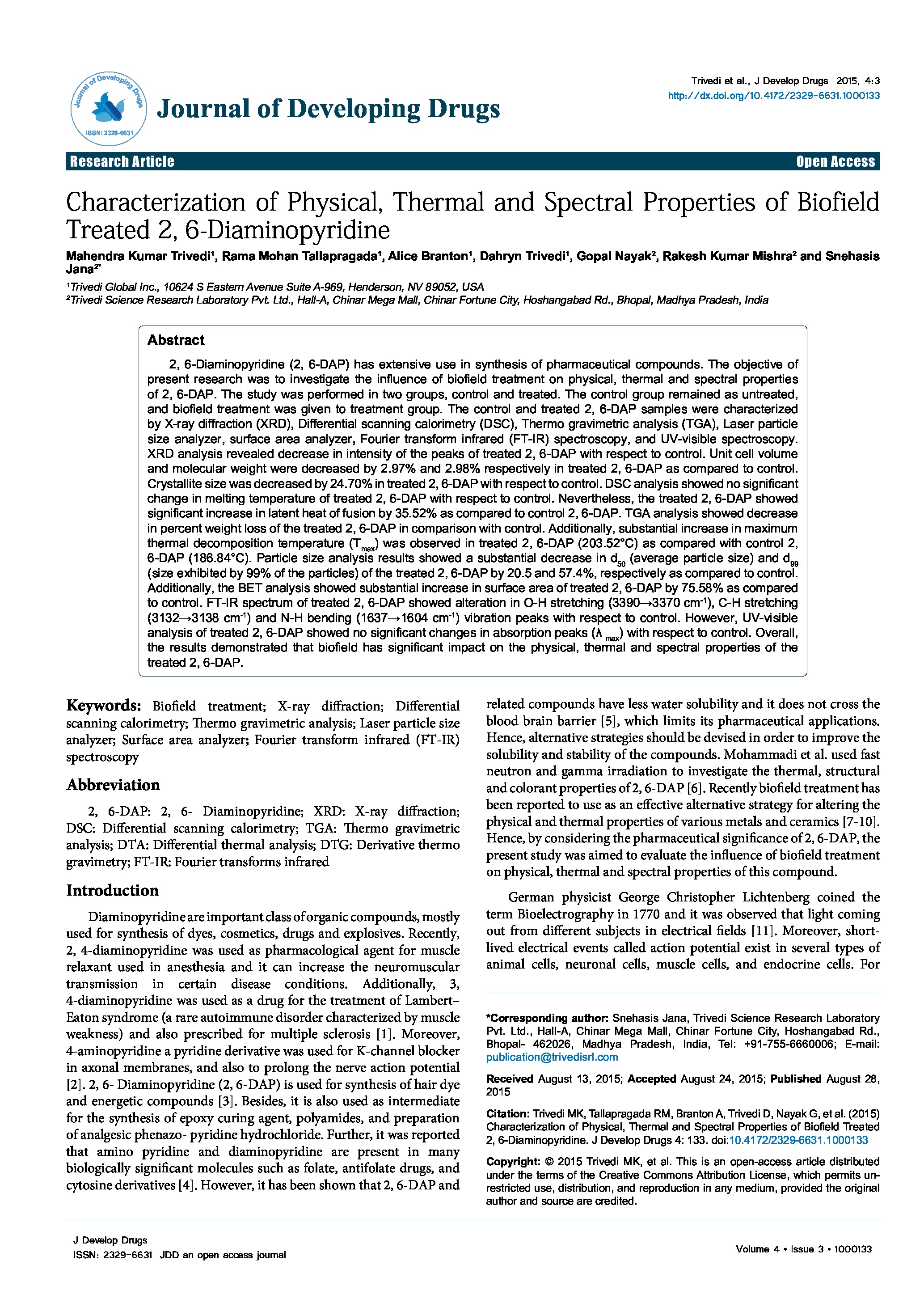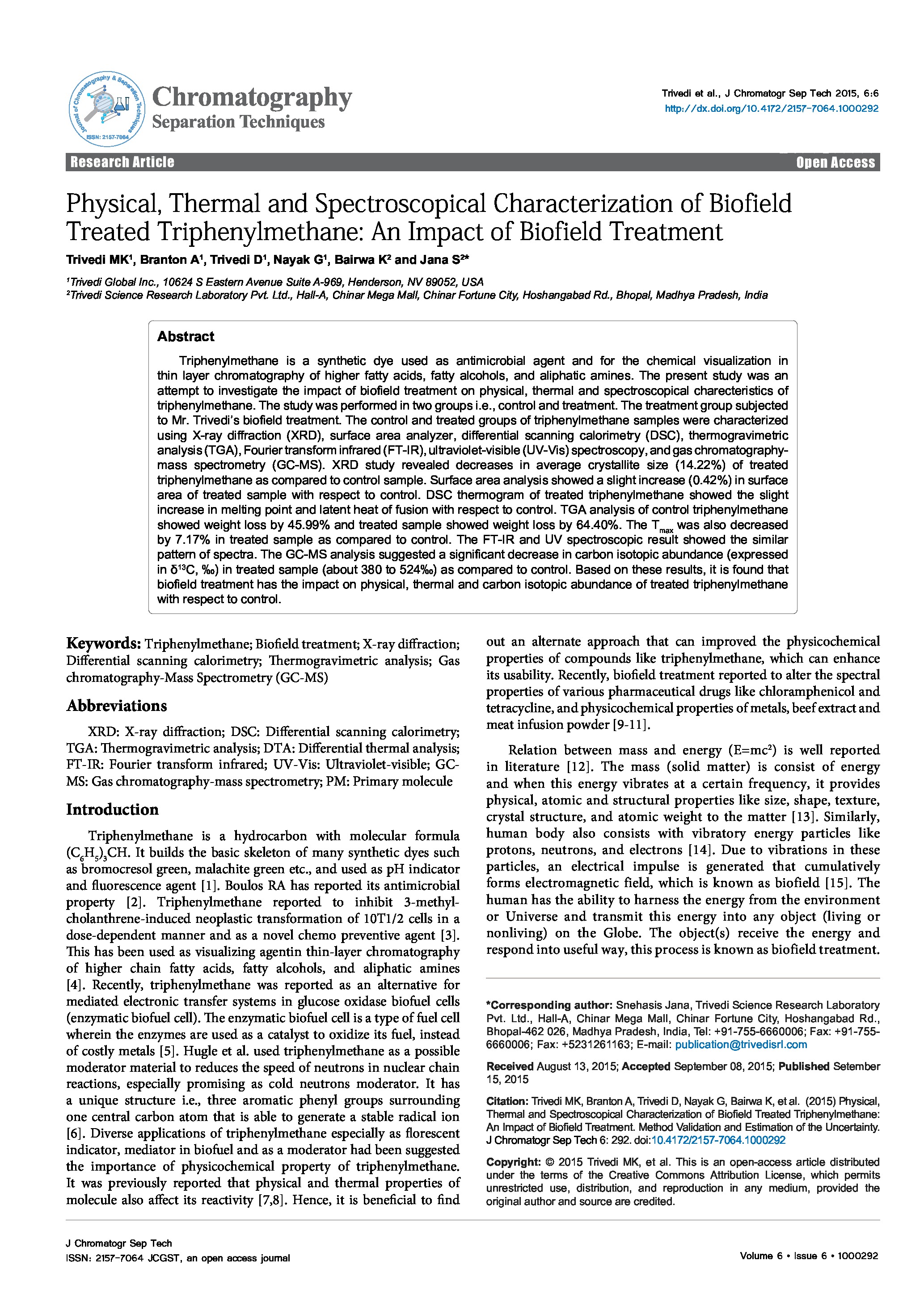Date of upload:
22.11.2016
Co-author:
Mahendra Kumar Trivedi, Rama Mohan Tallapragada, Dahryn Trivedi, Gopal Nayak, Rakesh Kumar Mishra, Snehasis Jana
Abstract:
2, 6-Diaminopyridine (2, 6-DAP) has extensive use in synthesis of pharmaceutical compounds. The objective of present research was to investigate the influence of biofield treatment on physical, thermal and spectral properties of 2, 6-DAP. The study was performed in two groups, control and treated. The control group remained as untreated, and biofield treatment was given to treatment group. The control and treated 2, 6-DAP samples were characterized by X-ray diffraction (XRD), Differential scanning calorimetry (DSC), Thermo gravimetric analysis (TGA), Laser particle size analyzer, surface area analyzer, Fourier transform infrared (FT-IR) spectroscopy, and UV-visible spectroscopy. XRD analysis revealed decrease in intensity of the peaks of treated 2, 6-DAP with respect to control. Unit cell volume and molecular weight were decreased by 2.97% and 2.98% respectively in treated 2, 6-DAP as compared to control. Crystallite size was decreased by 24.70% in treated 2, 6-DAP with respect to control. DSC analysis showed no significant change in melting temperature of treated 2, 6-DAP with respect to control. Nevertheless, the treated 2, 6-DAP showed significant increase in latent heat of fusion by 35.52% as compared to control 2, 6-DAP. TGA analysis showed decrease in percent weight loss of the treated 2, 6-DAP in comparison with control. Additionally, substantial increase in maximum thermal decomposition temperature (Tmax) was observed in treated 2, 6-DAP (203.52°C) as compared with control 2, 6-DAP (186.84°C). Particle size analysis results showed a substantial decrease in d50 (average particle size) and d99 (size exhibited by 99% of the particles) of the treated 2, 6-DAP by 20.5 and 57.4%, respectively as compared to control. Additionally, the BET analysis showed substantial increase in surface area of treated 2, 6-DAP by 75.58% as compared to control. FT-IR spectrum of treated 2, 6-DAP showed alteration in O-H stretching (3390→3370 cm-1), C-H stretching (3132→3138 cm-1) and N-H bending (1637→1604 cm-1) vibration peaks with respect to control. However, UV-visible analysis of treated 2, 6-DAP showed no significant changes in absorption peaks (λ max) with respect to control. Overall, the results demonstrated that biofield has significant impact on the physical, thermal and spectral properties of the treated 2, 6-DAP.




